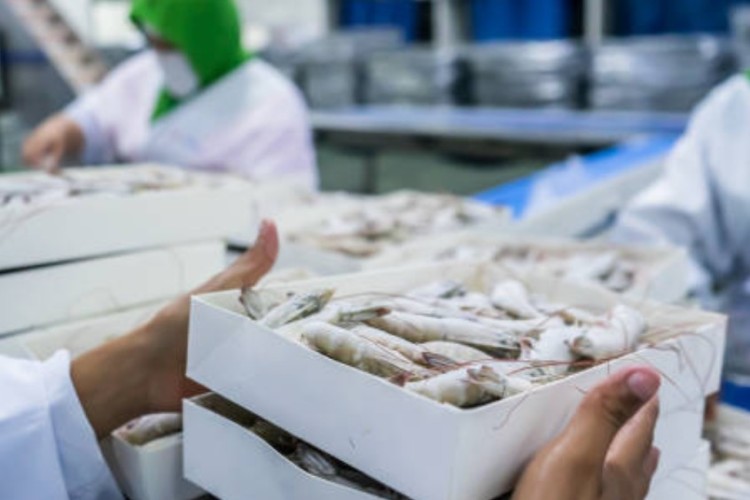
India’s agricultural exports stood at $53.1 billion in 2022-23, slipping to $48.76 billion in 2023-24. These swings reflect both global price volatility and shifting domestic policies. Among the major export items are rice, spices, seafood, and plantation crops. Seafood alone contributed $8.09 billion in 2022-23 and $7.38 billion in 2023-24, about 15% of farm exports.
The Marine Products Exports Development Authority (MPEDA) has set a target of $18 billion in seafood exports by 2030. That goal has become harder to achieve since President Trump’s August 2025 announcement of an additional 25% tariff on Indian goods, doubling the levy on many items, including seafood. Shrimp accounts for nearly 92% of India’s seafood exports to the US, valued at about $2.5 billion in FY 2023-24. Officials and trade experts say the tariff renders Indian exports to America unviable, forcing New Delhi to look for alternative markets and accelerate domestic reforms.
READ | China’s Huawei threatens Nvidia’s AI chip dominance
Shrimp aquaculture needs policy support
The immediate question is whether India can cushion the blow. Expecting the domestic market to absorb even half of the shrimp diverted from the US is unrealistic in the short run. Building scale, quality consistency, and reliable supply chains at home will take years.
Foreign direct investment has been fully open in Indian aquaculture since 2016, but global majors have shown little appetite for setting up operations within the country. That leaves Indian firms with two options: diversify into other overseas markets, or pursue offshore investments in countries with mature, vertically integrated shrimp industries. Given that the US will remain the largest consumer for Indian shrimp, offshore acquisitions or leases in Latin America offer a more immediate hedge.
Seafood exports: Why Ecuador stands out
Among Latin American producers, Ecuador emerges as the most attractive partner. It is a global leader in shrimp production, with a vertically integrated ecosystem—seed hatcheries, feed production, farming, processing, and global logistics—already in place. An Indian investor would not have to build the supply chain from scratch.
Both India and Ecuador are among the lowest-cost producers in the world. Indian firms could transfer their experience with improved-extensive systems while learning from Ecuador’s semi-intensive, large-pond model. The country’s dollarised economy eliminates currency risk, providing financial stability. While Ecuador’s politics can be volatile, aquaculture has long enjoyed government support, with policies welcoming foreign capital and guaranteeing 100% foreign ownership, tax incentives, and repatriation of profits.
Crucially, Ecuador’s shrimp industry has diversified markets across Asia, Europe, and the US. This global reach could reduce Indian exporters’ reliance on a single destination, mitigating the risks of sudden tariff shocks.
Other options: Brazil and beyond
Brazil, Honduras, and Nicaragua also offer possibilities. Brazil, a BRICS partner, might have political advantages for Indian firms. But the 50% US tariff applies there too, limiting its appeal. Honduras and Nicaragua have smaller industries and higher political risks.
Ecuador, by contrast, is already attracting serious foreign investment. Japanese giant Mitsui & Co.’s stake in Industrial Pesquera Santa Priscila, one of the world’s largest shrimp companies, signals that the sector is open to strategic acquisitions. For Indian players with capital and cost-efficiency expertise, the timing is favourable.
The invisible costs of investing in Ecuador
Yet the picture is not without shadows. Ecuador’s shrimp farms have faced allegations of mangrove destruction, illegal chemical use, and poor labour practices. Companies entering the sector will inherit these reputational risks, especially when selling into markets that demand traceability and sustainability.
Security is another major concern. Organised crime has targeted the shrimp industry, forcing companies to spend heavily on armed guards, surveillance, and secure transport. Rising costs of fuel, labour, and compliance further erode margins.
Dollarisation, while stable, removes the flexibility of currency devaluation—a tool used by competitors like India and Vietnam to stay competitive during price downturns. With global shrimp prices currently under pressure, higher operating costs in Ecuador become a serious concern.
Finally, the bureaucracy is cumbersome. Permits and approvals can be slow, and corruption remains an issue. Changes in taxation and labour law are unpredictable, and Ecuador lacks a free trade agreement with the US—exposing exporters to political risk on tariffs.
Balancing opportunity and risk
For India’s aquaculture sector, diversification beyond the US market is inevitable. Ecuador offers the most attractive offshore opportunity, combining scale, integration, and market access. But the invisible costs—security, sustainability, and policy unpredictability—must be factored into any investment decision.
Indian shrimp exporters face a difficult choice: absorb the tariff shock and risk long-term erosion of competitiveness, or take the bolder step of establishing a footprint abroad. The answer may lie in selective offshore investments combined with stronger domestic reforms—streamlined regulation, disease-resistant hatcheries, value-added processing, and better branding.
India’s seafood exports cannot depend indefinitely on one product and one market. The Trump tariff may have forced a crisis, but it could also push the sector to adopt a more resilient, diversified, and sustainable model.
Dr M Krishnan is former Principal Scientist & Head, ICAR- Central Institute of Fisheries Education, Mumbai. Dr Badri Narayanan Gopalakrishnan is a Visiting Senior Fellow, CSEP, New Delhi.
